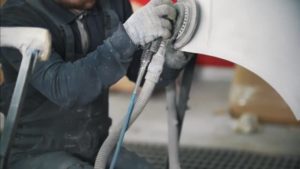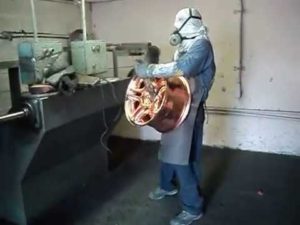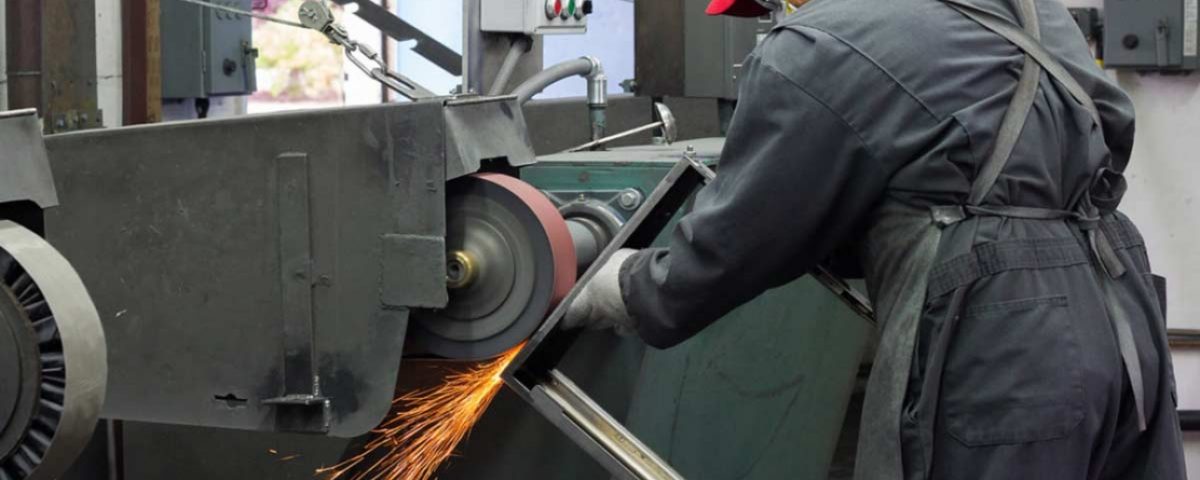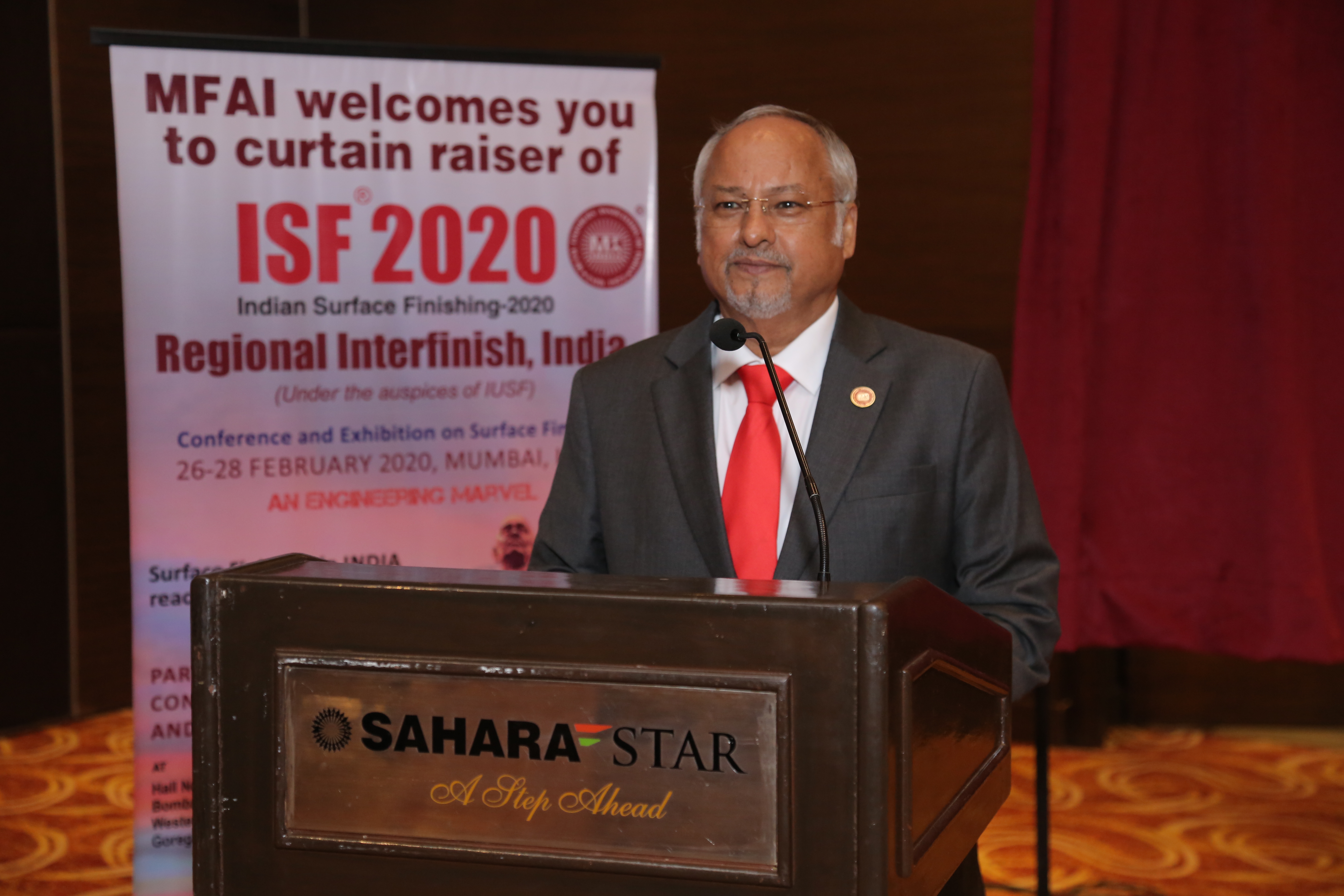A Brief History of the Growth, and Future of Surface Finishing and Electroplating

“We have to ensure both compliance with environmental laws, and the growth and survival of the electroplating industry”
August 6, 2019One of the key parameters in the quality check of manufactured products – whether for industrial or individual use – is the surface finish of the product. While the individual looks for aesthetics, industrial users look for precision. The surface finish of component parts, for example, must meet specifications to enable the machine to function properly and extend its life. Non-conformity to specifications will affect friction, corrosion, contact, and consequently fatigue and wear – resulting in significantly lower working life.
What is Surface Finishing?

Surface finishing – also known as simply finishing, metal finishing, and other terms – is a range of processes that alter the surface of a finished product or a component part to generate new finish. It may be employed either to improve the quality and appearance of the product – as in the case of metallic pens – or to meet certain component specifications. There exist multiple categorizations or classifications of surface finishes depending on the process, the purpose, the material of the product being finished, and the component part names.
Electroplating is a technique by which one metal is applied over another – either with a view to decorate the product, protect it from the environment, or achieve precision for use in machines. Electroplating is a large industry in India.
Electroplating in India – the Story Thus Far
Electroplating in India began after independence. In the early sixties, the plating was done using dull nickel. Research estimates that in the 1970s, the size of the electroplating industry was 100 million, with the first semi-automatic plant established in Mumbai.
The industry grew rapidly in the 1970s and early 1980s registering a CAGR of 6.6%. Presently it’s worth Rs 2,000 crore and growing at 20% year-on-year. The estimated 12000 units employ around 1,30,000 individuals, although there are no official statistics available for smaller and unregistered units.
The Industry Landscape
The electroplating industry is unique in that there are no large units within this sector of the economy. All registered, organized, or recognized units have a paid-up capital of less than five crores categorizing them as small or medium. Units may also be classified as OEM or integrated units depending on whether they are an outsourcing unit or plating is a part of the manufacturing process. However, the net worth based classification is easier and hence widely used.
Market for Electroplating
 According to FutureMarketingInsights(FMI), electroplating as an integrated process continues to lead the industry even on the global front. This fact coupled with the pervasive nature of electroplating – given that finishing is required in a wide range of industries – are the main drivers of the industry. Growth is slackened because a large number of unorganized players are unable to scale up fast. The FMI study predicts that the APEJ (Asia Pacific Excluding Japan) will continue to hold its position as the highest contributor to the electroplating industry and opportunities are plenty for operators in eastern countries like India, China and Southeast Asian nations. Of these, the demand for electroplating in India is predicted as stronger given the recent surge of production facilities in the Indian industrial sector.
According to FutureMarketingInsights(FMI), electroplating as an integrated process continues to lead the industry even on the global front. This fact coupled with the pervasive nature of electroplating – given that finishing is required in a wide range of industries – are the main drivers of the industry. Growth is slackened because a large number of unorganized players are unable to scale up fast. The FMI study predicts that the APEJ (Asia Pacific Excluding Japan) will continue to hold its position as the highest contributor to the electroplating industry and opportunities are plenty for operators in eastern countries like India, China and Southeast Asian nations. Of these, the demand for electroplating in India is predicted as stronger given the recent surge of production facilities in the Indian industrial sector.
The ENVIS study envisages high growth potential for electroplating in the electronic industry followed by the automotive industry. The report also anticipates high outsourcing to India because of the environmental laws in industrialized and developed countries like Europe and North America. Moreover, the report anticipates a 100% growth rate in exports because of the excellent quality and cheap cost of chemicals in India.
Major Market Trends
A Mordor Intelligence report predicts the following market trends –
The electroplating market will be dominated by the automotive sector because metal finishing is predominantly in use to protect metal components in vehicles. Medial finishing is also used in other parts of automotive, such as brake, air-conditioning, chassis, and fuel systems.
Asia Pacific region will dominate the electroplating market. The industry has already experienced this in 2018 as a direct result of a rise in the production of electronics and will continue to do so. China, which was hitherto fore the largest producer of automotive experienced slack in 2018 – in terms of both production as well as sales.
Another factor driving the growth of electroplating in India is the increase in the manufacture of electric vehicles, which consequently increases the demand for electroplating.
Closer to home, India is also experiencing heavy international investment in the automotive industry. Hyundai alone has planned an investment of 1 billion by 2020. These market trends will drive up the demand for electroplating and aid the growth of the industry in India.
In sum
Electroplating has been around for centuries. The industry has prospered among the ranks with the unorganized sector predominantly ruling the roost. With the recent surge by the Indian government to support small and medium enterprises, the country envisages further growth of this sector.


